READ TO THE VERY END for a SURPRISE!!
I still don’t get all the negativity around Miles Davis. I don’t understand where the idea comes from that Miles was nasty, mean and rude. The movie Miles Ahead went even further, idiotically depicting him as hostile and violent (not to mention that Don Cheadle looks absolutely nothing like Miles). That is Not the way Miles is described by musicians who worked with him. Have you ever read or listened to an interview with a former band member that was anything but positive?
In fact, Miles had a habit of leaning over and “hugging” his piano players from the shoulders in order to show them chord voicings (voicings are specific ways to spread out the notes of a chord, and specific notes to add for color). Starting as far back as the late 1940s, he tended to favor “crunchy” voicings —that is, voicings that contain dissonances such as half-steps. Was it necessary to lean over the pianists in order to show them voicings? Of course not—Miles could, and sometimes did, sit down next to them or ask them to get up for a minute. Leaning over them was a display of affection. To illustrate this, I’ve put together a photo album for you—with an audio surprise at the end.
First, here’s Miles with pianist Gil Coggins, recording for Blue Note records on May 9, 1952. (I can’t recognize the person with sunglasses on the left.) This, like just about all Blue Note photographs, was taken by Francis Wolff:
From the same 1952 session—this time bassist Oscar Pettiford is on the left:
Here’s Miles with Horace Silver, at a Blue Note recording session on March 6, 1954. That’s Clifford Brown on the left! Brown didn’t have a recording session that day, so I guess he was just hanging out.
Some men are uncomfortable with that kind of physical closeness with another man. I notice that in a second photo from this date, Silver has moved over:
And Red Garland looks super uncomfortable in all three photos from a Columbia Records session on March 4, 1958. According to Miles and others, Garland left this session due to some kind of altercation with Davis, after recording just one piece, Jackie McLean’s “Dr. Jackle.” (This piece is called “Dr. Jekyll” on some releases of the album Milestones—and on some it’s written both ways!—but “Jackle,” a play on “Jackie,” is correct.) Was it because of Red’s discomfort with Miles putting his arms around him? In any case, after Red left, Miles played piano on “Sid’s Ahead,” and there is no piano on a performance of McLean’s “Little Melonae” that wasn’t issued until many years later. The photographer at this session was Dennis Stock.
(By the way, Tom Lord, the researcher behind the master discography of all jazz recordings, which is at Lordisco.com, notes that only one source disagrees that Garland left early: The book that comes with the big boxed set, Miles Davis: The Complete Columbia Recordings, says that Garland was in fact late, and that “Sid’s Ahead” was recorded first. But the assigned numbers indicate that “Dr. Jackle” was recorded first, and, besides, if Garland was present for the later part of the session, why didn’t he play on “Little Melonae”? So I think we can ignore that theory.)
Bill Evans didn’t seem to mind Miles’s chin on his shoulder during the 1959 Columbia recording sessions for Kind of Blue, though he did stand up at one point (and there’s another photo where Bill is playing something while he’s standing up and Miles is sitting). The photographer for this Columbia session was Don Hunstein.
Miles was still doing this in later years. Chick Corea, who was a member of Miles’s group from about mid-68 until late 1970, says so in a tiny interview clip from The Miles Davis Story (directed by Mike Dibb, 2001)—go to 1:22:30:
Was Miles the only musician who did this? Apparently not: Here’s Kenny Dorham leaning over Horace Silver in January 1955 at a rehearsal for his album Afro/Cuban. (The rehearsal was held at the Village Vanguard.)
One could argue that Dorham picked this up from Miles. But here are two photos of Ellington leaning over Strayhorn. There’s no way Duke got this idea from Miles!
And, before we leave, you know enough now that you should be able to tell what is going on in an audio clip, without any visual aid. This is the first take, an incomplete run-through, of “Little Willie Leaps,” an early Davis composition, recorded in August 1947. Miles is leading a quintet with Charlie Parker on tenor sax and John Lewis on piano. I ask you, what is happening when the group stops playing, right near the beginning, from 0:27 to 0:45?:
Yep, you hear a bit of discussion between John and Miles (it’s hard to make out what’s being said, but I think it’s John who says “Hmm” in agreement at 0:32), and then Miles says something at 0:35 and leans over John and plays his crunchy voicings for him a few times! So Miles was doing this even back in 1947.
This is also the VERY FIRST recording of Miles’s voice, years before he became hoarse. More examples of his voice are coming later!
Be well!
All the best,
Lewis
P.S. Someone asked, “What about the fact that Miles hit women occasionally?” Of course that is inexcusable, and I might address that another time. But the focus of this post is about how he related to his musicians.
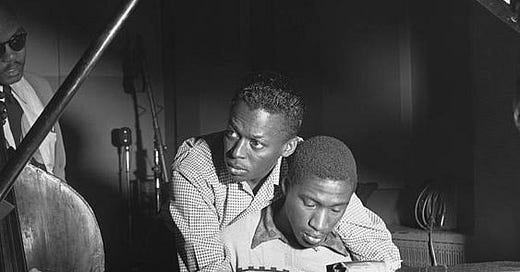




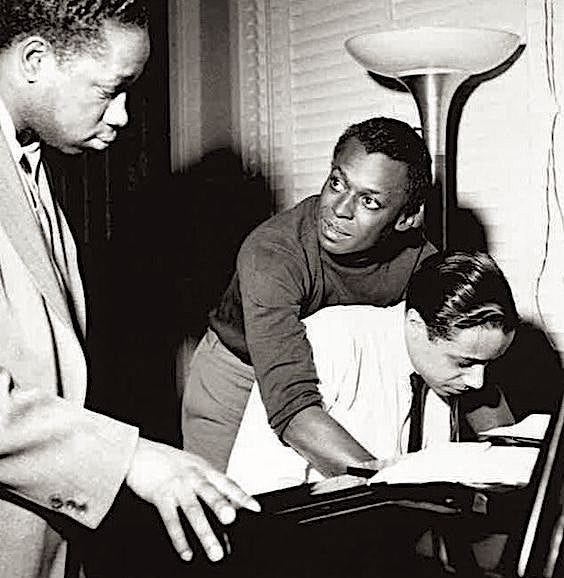
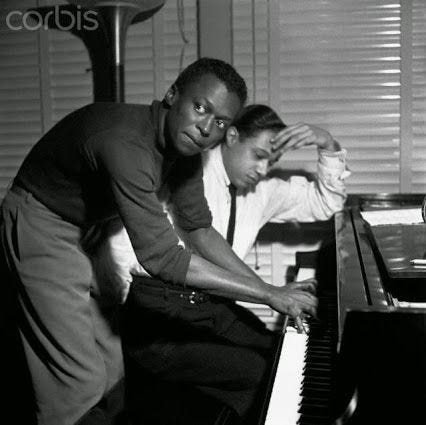
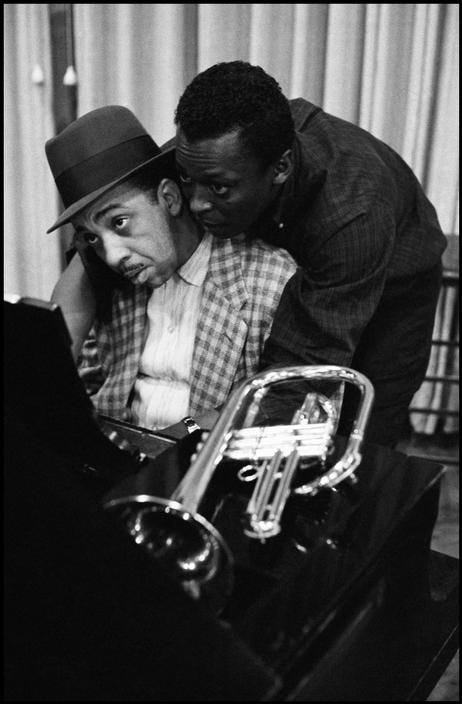
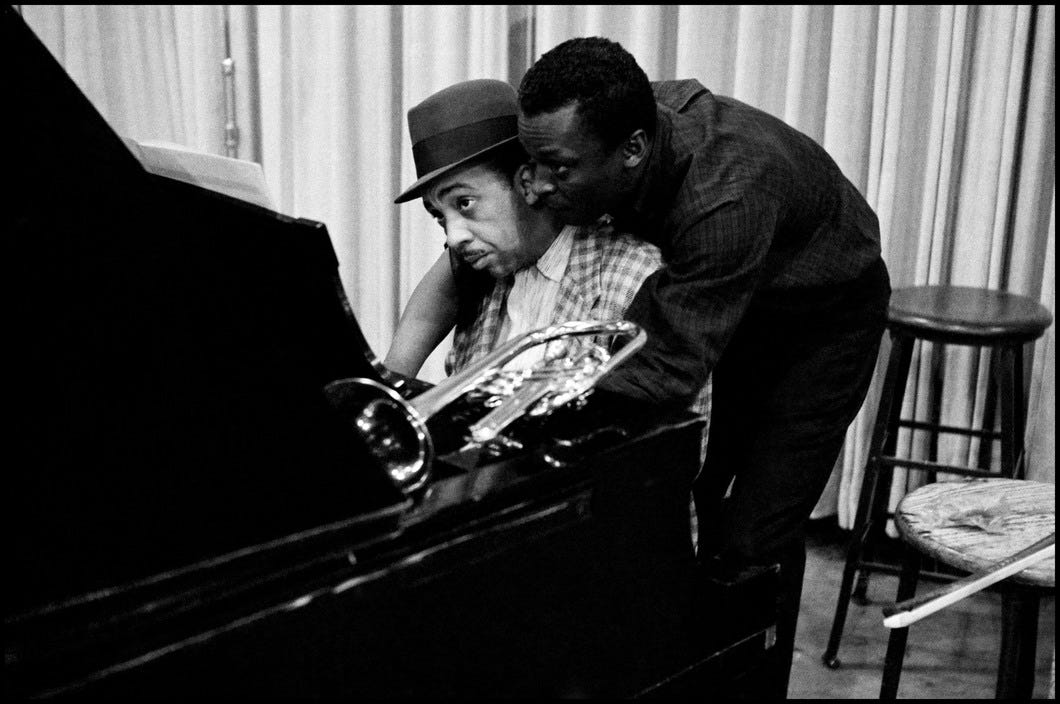
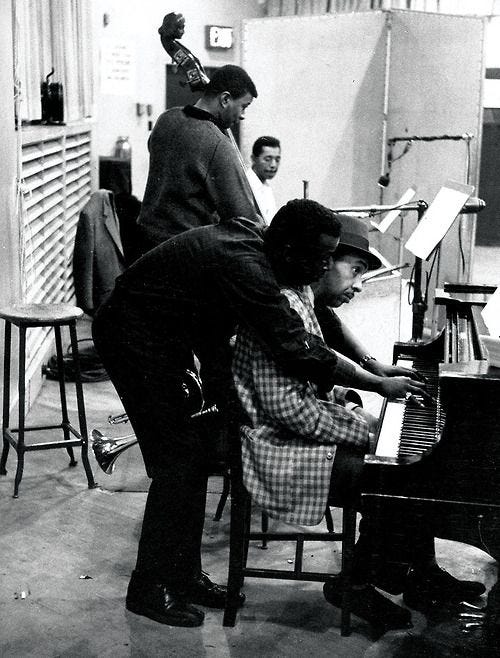

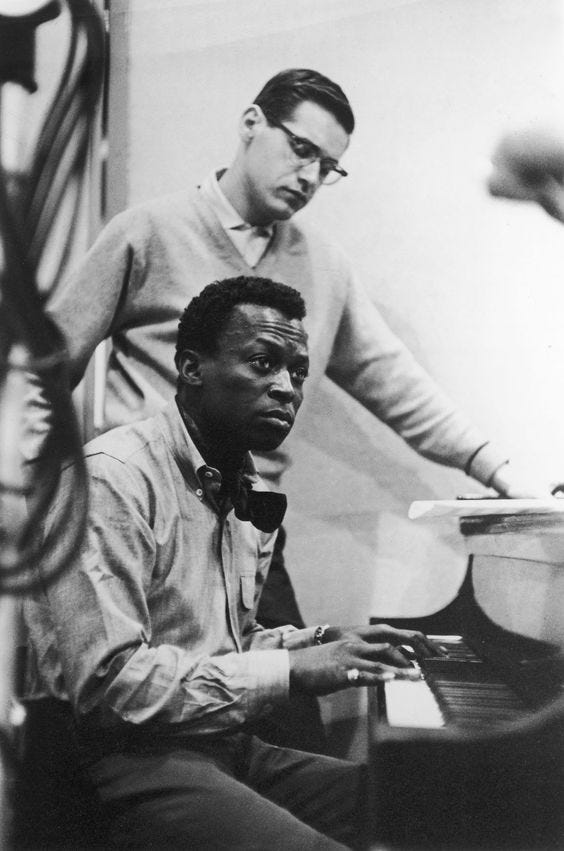
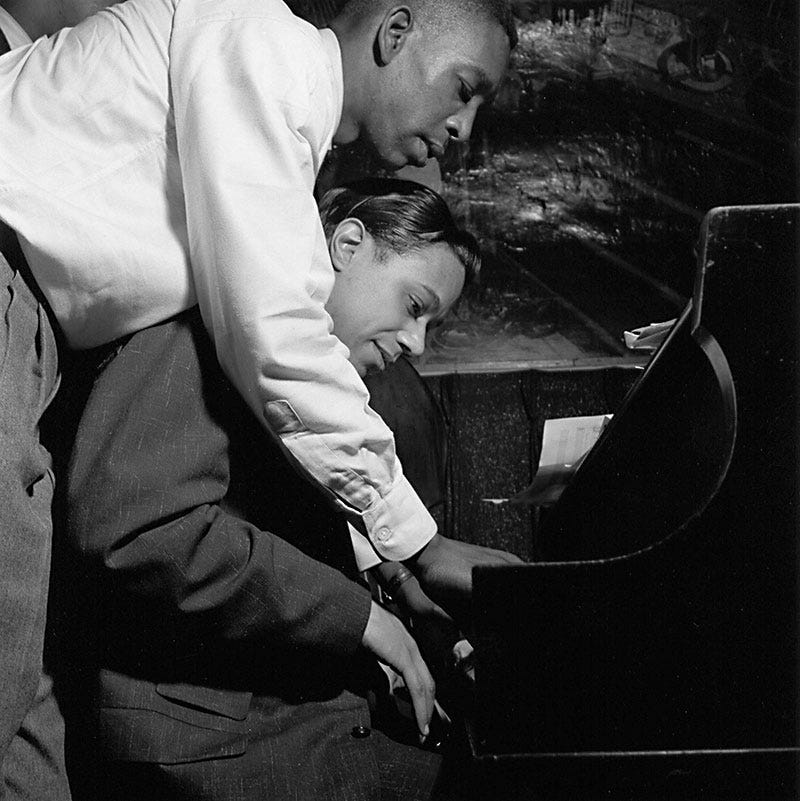
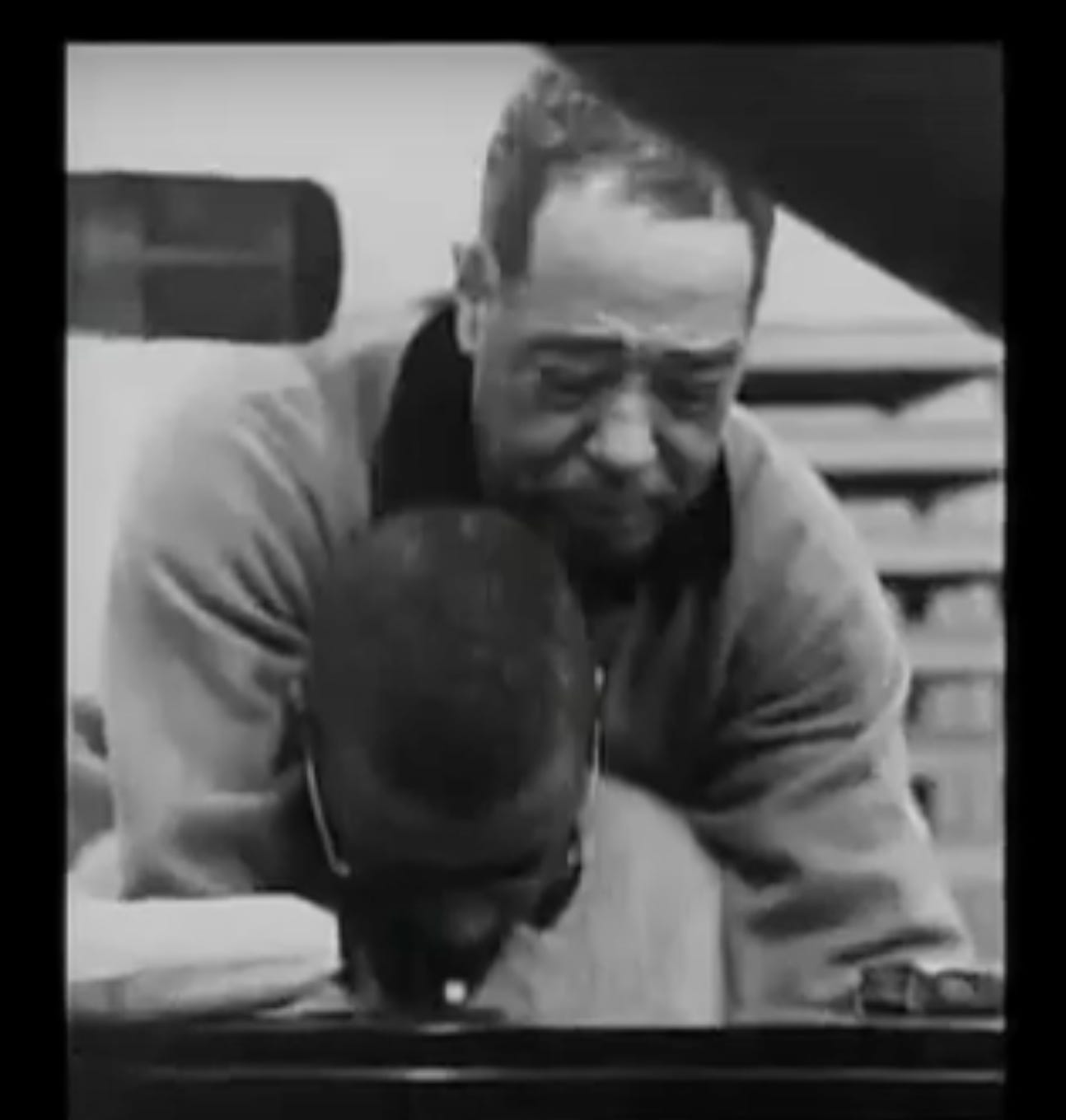

I love this, the information and perspective is keen. I think it also exhibits the egalitarian and socratic nature in jazz. To me these photos speak to the pianists, moreso than Miles (who is obviously all about the music, and caring). The best musicians I know dont care who they get the information from. I remember playing with Kevin Mahogany, who wanted to play a certain tune, which Kenny Drew jr (who was playing piano) said he did not know (extremely rare for him). I said I knew it, and Kenny said , great, show me. We shared the piano bench for a minute, and I played a few bars and as you might imagine, he said "oh yeah, I remember that". Kenny was a dear friend, but I was always in awe of his musicianship, and his person. It struck me how unassuming he always was when it came to receiving information. In the long run I learned more from Kenny's attitude that day than he ever would from me reminding him of a tune he actually did know. So, these insights and pictures make perfect sense, and exhibit pursuance of excellence. Thank you Dr Porter.
Thanks for all of your work, Dr. Porter. I've devoured what I've found of it, including your Prez bio. I grew up in WV, hearing Basie and other great jazz from Dick Martin, at WWL in New Orleans and Sid McCoy from Chicago on AM radio. When I moved to Chicago after college, Prez and Billie became my first loves, as Daddyo Daylie turned me on with his Friday morning "killer days" that featured their late '30s recordings, and Miles' and Trane's 50's recordings hit me like a ton of bricks. It took me a while to "get" their later work, and while I did better with Miles, Trane lost me after the great quartet.